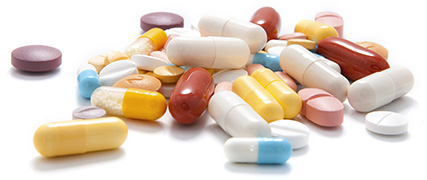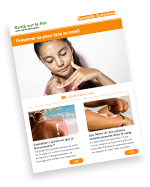Hypersomnia related to drugs - Hypersomnia related to neurological disease - Post-traumatic hypersomnia - Hypersomnia related to infectious disease - African trypanosomiasis or sleeping sickness - Hypersomnia related to metabolic or endocrine disease
Hypersomnia related to drugs
Most involved drugs
 Many drugs are potentially responsible for excessive daytime sleepiness such as hypnotics, anxiolytics, some antidepressants and neuroleptics, H1 antihistamines and finally antiepileptics (except lamotrigine) and antiparkinsonians.
Many drugs are potentially responsible for excessive daytime sleepiness such as hypnotics, anxiolytics, some antidepressants and neuroleptics, H1 antihistamines and finally antiepileptics (except lamotrigine) and antiparkinsonians.
Some cases of acute stimulant withdrawal, such as with amphetamine derivatives, may result in a marked rebound in sleep, as seen in cases of sleep deprivation.
The diagnosis is easy after questioning the patient.
Role of alcohol
Alcohol has alternating sedative and stimulating effects depending on the type of individual and the blood alcohol level. Excessive alcohol consumption also leads to poor sleep at night.
The search for the imputability of alcohol in the cause of hypersomnia should be systematic and a substitution should be proposed to the patient.
Hypersomnia related to neurological disease
Many neurological conditions can cause objective daytime sleepiness:
- Brain tumours are found particularly when they are located in the thalamus, hypothalamus, brainstem or when there is a mass effect on these structures. Some cases of symptomatic narcolepsy have been described with brain tumours.
- Strokes with unilateral or bilateral paramedian thalamic or brainstem infarcts are often characterised by hypersomnia.
- Neurodegenerative diseases, Alzheimer's disease, Parkinson's disease, multisystematic atrophies, are sometimes associated with objective hypersomnia.
A sleep apnea syndrome must always be ruled out beforehand, as well as a drug cause for the sleepiness. - Neuromuscular diseases are often associated with nocturnal ventilatory disorders and may thus predispose to abnormal sleepiness.
Steinert's disease can be singled out here because of its frequent association with hypersomnia, itself characterised by frequent REM sleep onset, as seen more classically in narcolepsy.
Post-traumatic hypersomnia
Frequency
It is impossible to estimate precisely the frequency of hypersomnia occurring after a head injury. However, this hypersomnia is relatively rare, difficult to individualise and sometimes causes medico-legal problems.
Clinical signs
The main clinical signs of post-traumatic hypersomnia are :
- An abnormal objective sleepiness appears in the 6 to 18 months following the head injury, thus qualified as post-traumatic hypersomnia.
- This hypersomnia is clinically similar to idiopathic hypersomnia.
- However, objective hypersomnia seems to be infrequent compared to the complaint of drowsiness (i.e. subjective) which may be part of a more global context associating fatigue, vertigo, headache, mood disorders, memory disorders characterising the subjective syndrome of head injuries.
- The evolution is very variable, depending on the location and extent of the initial brain damage.
Risk factors
There are some risk factors for drowsiness after head injury:
- a coma lasting more than 24 hours
- a skull fracture
- early surgery
- hypothalamic damage
Hypersomnia related to infectious disease
Viral infections such as certain pneumonias, mononucleosis, HIV, arboviruses, etc., but also Guillain-Barré syndrome, Whipple's disease, etc., can sometimes be responsible for real hypersomnia. Several months after the acute phase, the patient realises that a real sleepiness has set in, the clinical characteristics of which may be quite similar to those of idiopathic hypersomnia. This complaint of sleepiness must be distinguished from a complaint of asthenia, which is particularly frequent after any severe infection.
African trypanosomiasis or sleeping sickness
African trypanosomiasis, otherwise known as "sleeping sickness", is a parasitic disease transmitted by the tsetse fly. This disease, which is common in endemic regions (particularly in Africa), is fatal. It combines a picture of meningoencephalitis, tremor, dyskinesia, choreoathetosis and hypersomnia. An alteration of the circadian rhythm with several falls asleep in REM sleep characterises this drowsiness. The curative treatment involves melarsoprol, an arsenical derivative responsible for significant toxicity, and pentamidine, which is less toxic but does not easily cross the blood-brain barrier. Prevention involves destroying the tsetse fly with insecticides. There is currently some hope in terms of prospects for vaccinations.
Hypersomnia related to metabolic or endocrine disease
This nosological entity is rare, however abnormal sleepiness is sometimes described in cases of glycaemia dysregulation, hepatic encephalopathy, hypothyroidism and acromegaly.a nocturnal ventilatory abnormality must first be eliminated in the genesis of this hypersomnia.Finally, a syndrome of periodic movements of the limbs sometimes at the origin of real hypersomnia may be of metabolic origin, in particular with iron deficiency, diabetes or renal insufficiency...


